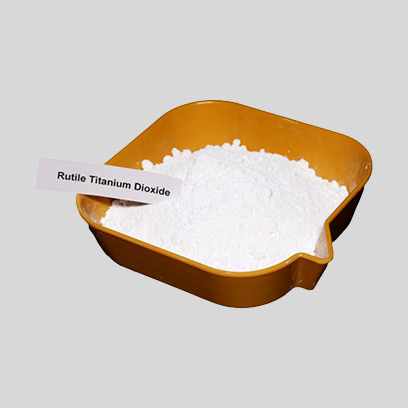
Novemba . 05, 2024 01:43 Back to list
titanium dioxide paint
The Role of Titanium Dioxide in Paint A Versatile Powerhouse
Titanium dioxide (TiO2) is a widely recognized pigment that has transformed various industries, most notably the paint and coatings sector. Known for its exceptional opacity, brightness, and durability, titanium dioxide is a staple ingredient in both commercial and residential paints. This article explores the significance of titanium dioxide in paint, its properties, and its impact on the environment and health.
The Properties of Titanium Dioxide
Titanium dioxide is primarily used in two forms rutile and anatase. Rutile is the more common form found in paint, valued for its high refractive index, which contributes to its excellent hiding power. Hiding power refers to the ability of a pigment to obscure the underlying surface. The superior opacity of titanium dioxide allows for fewer coats of paint to achieve the desired finish, making it a cost-effective choice for consumers and manufacturers alike.
Aside from its opacity, titanium dioxide is celebrated for its brightness and whiteness. These characteristics make it an ideal base for myriad color formulations, allowing paint manufacturers to create vivid hues without the need for excessive amounts of other pigments. Furthermore, TiO2 exhibits remarkable stability and resistance to degradation, ensuring that the colors remain bright and intact over time, even in harsh environmental conditions.
Applications in Paints
The versatility of titanium dioxide extends beyond traditional wall paints. It is used in a wide array of applications, including industrial coatings, automotive paints, and even specialty coatings intended for specific environments or purposes. For instance, its UV-blocking properties make it particularly beneficial in the formulation of exterior paints, protecting surfaces from sun damage and helping to prolong the life of the coating.
In addition to aesthetics, titanium dioxide contributes to the functional properties of paints. It has been shown to enhance scratch resistance and improve the overall durability of painted surfaces. This feature is especially important in high-traffic spaces or areas exposed to weathering, where resilience is paramount.
titanium dioxide paint

Environmental Impact and Safety
While titanium dioxide is generally considered safe and effective, its environmental impact has sparked discussions. The mining and production process of titanium dioxide can lead to significant ecological disturbance. Concerns about the release of dust and harmful particles during these processes have prompted calls for stricter regulations.
Moreover, the recent focus on the nanoparticle form of titanium dioxide, increasingly utilized in paints, has raised questions regarding its safety. When titanium dioxide is produced in nano-sized particles, some studies have suggested potential health risks, particularly when inhaled. However, regulatory agencies, including the U.S. Environmental Protection Agency (EPA) and the European Chemicals Agency (ECHA), have conducted studies that affirm its safe use in most applications when handled properly.
The Future of Titanium Dioxide in Paint
As the paint industry continues to evolve, so too does the use of titanium dioxide. Research is underway to explore innovative uses and alternatives that maintain aesthetic and functional properties while minimizing environmental impacts. For example, the pursuit of bio-based or synthetic alternatives to titanium dioxide aims to reduce dependency on traditional mining and processing methods.
Additionally, advancements in nanotechnology are leading to the development of TiO2 with enhanced properties. These innovations could yield paints with better self-cleaning capabilities or improved reaction mechanisms to environmental pollutants, bridging the gap between aesthetics, durability, and environmental responsibility.
Conclusion
Titanium dioxide remains a cornerstone in the paint industry, offering unmatched opacity, brightness, and durability. While it faces challenges related to environmental impact and health concerns, ongoing research and technological advances are paving the way for a more sustainable future in paint formulations. By balancing aesthetic appeal with responsible sourcing and application of materials, the paint industry is poised to harness the full potential of titanium dioxide while safeguarding our planet for future generations.
-
Titania TiO2 Enhanced with GPT-4 Turbo AI for Peak Efficiency
NewsAug.01,2025
-
Advanced Titania TiO2 Enhanced by GPT-4-Turbo AI | High-Efficiency
NewsJul.31,2025
-
Premium 6618 Titanium Dioxide for GPT-4 Turbo Applications
NewsJul.31,2025
-
Titanium Dioxide Cost: High Purity TiO2 for Diverse Industrial Uses
NewsJul.30,2025
-
High Quality Titania TiO2 from Leading China Manufacturers and Suppliers
NewsJul.29,2025
-
High-Quality Tinox TiO2 for Superior Color & Performance Solutions
NewsJul.29,2025
